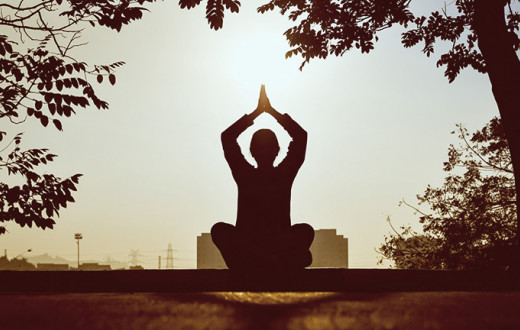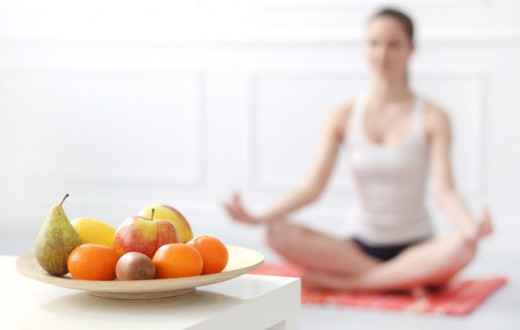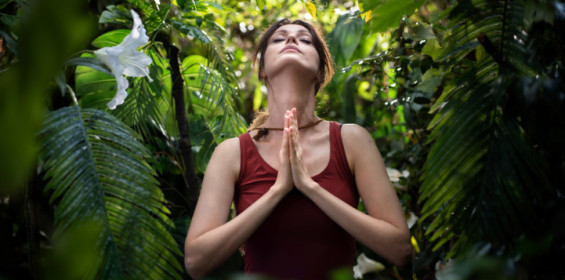An estimated 103 million U.S. adults have high blood pressure, according to new statistics from the American Heart Association. That’s nearly half of all adults in the United States.
What is blood pressure?
Blood pressure (BP) is the term for an essential function of the body, in which, as the heart alternately pumps and relaxes, the blood in the arteries exerts a force on the artery-walls. This force is measured as blood pressure and is indicated by the combination of two numbers: your systolic score written above your diastolic score. The systolic number measures your blood pressure while the heart pumps blood, and the diastolic number (which is regarded as more important), represents the blood pressure between beats.
The normal blood pressure varies slightly from person to person. For your bodily systems to function smoothly, blood pressure needs to be regulated. According to new guidelines released by the the American Heart Association in November 2017 considers 120/80 as the standard blood pressure limit. Between 120/80 and 130/90, is called pre-hypertension. Anything above 130/90 is hypertension and is considered dangerous.
What is high blood pressure or hypertension?
Though BP normally varies through the day, being higher at work and lowest when a person is sleeping, but it can damage your heart and cause health problems if it stays high for a long time. High blood pressure is also called hypertension. If the blood vessels are not relaxing normally, and if there are blockages in the arterioles, it can lead to increase in blood pressure. Older persons, and those with undetected or neglected stress-levels, are at greater risk for high BP.
Causes of high blood pressure
Essential hypertension is the most common type of hypertension found. It is an independent condition. This means that it is not triggered by other medical conditions like diabetes, heart related problems or kidney malfunctioning.
- Stress is a major factor that causes hypertension. When you are under stress, your heart beats faster and your blood vessels tend to contract causing high blood pressure.
- There are other factors such as adverse lifestyle choices - smoking, drinking alcohol, lack of exercise, eating foods high in sodium and low in potassium, obesity.
Hypertension – the “Silent Killer”
The most commonly-occurring type of high BP is hypertension, known as the “silent killer” because it gives no overt symptoms/indications. It has numerous causes, depending on the individual’s constitution, health condition and lifestyle. Stress, lowered immunity, poor nutrition/digestion, hardening of arteries and obesity are some of the other factors that contribute to high BP.
The risks involved
This can also be a risk factor for many chronic diseases like:
- Heart failure and stroke (especially at the time of waking), heart attack angina pectoris
- Hardening of the arteries
- Enlarged heart muscles
- Kidney damage and endocrine gland malfunction
- Weakens cardiovascular system
- Increased workload of heart and arteries
Symptoms of High BP
High BP is normally, not easy to detect, nor is its high-end variation, hypertension. Watch out for the following symptoms and consult your healthcare professional at the earliest:
- Dizziness/light-headedness, tiredness
- Heart pain, breathing problems, palpitation
- Sound in the ears
- Headaches, ache in neck on waking, generally subsides quickly
- Vomiting
- Tension
- Frequent urination
- Dull vision
Controlling High Blood Pressure
Keeping your blood pressure levels in a healthy range usually involves taking medications, reducing sodium in the diet, getting daily physical activity, and quitting smoking.
How Yoga Helps controlling high blood pressure
Neither a high nor a low blood pressure is desirable, a balance is essential in the body. While healthy dietary habits contribute to maintaining the balance, you cannot ignore the role played by the mind either. So, how can you harmonize the two? This million dollar question implies a healthy and happy person. The answer lies in Yoga.
According to WebMd, "Yoga, along with deep breathing exercises, meditation and inner reflection, is a good adjunctive and integrative cardiovascular approach to better health, including lowering blood pressure, as this data suggests," said Dr. David Friedman, chief of Heart Failure Services at the North Shore-LIJ Plainview Hospital, in Plainview, N.Y.
- Regular yoga and Sudarhshan Kriya (SKY) practice creates an alpha brain-wave state that lowers blood pressure.
- When done in conjunction with breath awareness, yoga postures bring balance to the autonomic nervous system, and stabilize the sympathetic and parasympathetic nervous system, resulting in the regulation of blood pressure.
- Pranayama practice has been shown to influence the cardiovascular system by decreasing the heart rate and blood pressure.
- Enhances circulation to all parts of the body and oxygenates the blood, enhancing alertness and cognitive skills and reducing stress and tension.
- Promotes additional therapeutic benefits like increased strength, flexibility, calmness of mind.
- Yoga postures channel the life-force or prana into all parts of the body, assisting the body to heal itself. They can soothe the nerves and slow the heart rate. Doing yoga stretches regularly keeps the arteries ductile and reduces the stiffness of the arteries, thereby lowering blood pressure.
- Practicing meditation techniques in times of physical or mental stress helps manage the “fight or flight” response to negative stress as well as lowering blood pressure. The mind and body are very intimately connected; when the mind is completely at ease, the whole body is as well.
- Yoga Nidra puts the body and mind into a deep state of relaxation.
- Yoga helps in increasing immunity and reducing incidences of heart problems like heart attacks and strokes.
- Lack of rest is a primary reason for stress and hypertension. Yoga can help regularize sleep habits and patterns.
- Obesity can lead to hypertension. Regular practice of yoga and an improved diet regulates body weight.
- Yoga gives positive energy to the body and mind. Yoga makes you happier and more hopeful in life. In the long run, this helps to lower high blood pressure.
Yoga Poses, breathing practices and meditation for regulating high blood pressure
The following yoga sequence can help lower high blood pressure. However, it would be best to learn and practice them under the guidance of a certified yoga teacher. Also, practice them at a relaxed and enjoyable pace. Depending upon your time availability, practice this for half an hour to 1 hour regularly in a quiet place.
- Deep Yogic Breathing floods the system with up to seven times more oxygen than normal breathing.
- Gentle Neck And Shoulder Rolls (Kantha and Skandha Sanchalana) Relieves stress and tension from head, neck and shoulder area.
- Easy Pose (Sukhasana) This meditative pose calms and unites the body and mind. It helps reduce high blood pressure or hypertension, as it makes your body more balanced and your mind free and joyful.
- Diamond Pose (Vajrasana) This pose can be done even after lunch or dinner. It helps to control obesity and increases blood flow to the lower abdomen.
- Child Pose (Shishuasana ) Relieves stress and fatigue. It also normalizes blood circulation.
- One Legged Seated forward bend (Janushirsasan) and Two legged Seated forward bend (Paschimottanasan) Help reduce fatty deposits in the abdominal region, thus enabling weight loss. It also acts as an effective stress reliever and normalizes high blood pressure.
- Sitting Half Spinal Twist (Ardha Matsyendrasana) Stimulates the heart and nervous system, helping to normalize high blood pressure.
- Bound Angle Pose (Baddhakonasana) Stimulates the heart and leads to better circulation of blood all over the body. It also relieves stress and weariness.
- Supported Downward Facing Dog (Adho Mukha Shwanasana) when done with necessary props and guidance, it calms the mind and strengthens the body.
- Bridge Pose (Setubandhasana) Energizes the kidneys and soothes the nervous system. It helps to regulate the blood pressure in the body.
- Leg up on the wall (Viparitkarni asana) brings relaxation in the body and improves circulation
- Corpse Pose (Savasan) Relieves stress, depression and fatigue. It helps the body relax and prepare for sound sleep. It also stimulates blood circulation.
- Crocodile with Bee breathing (Makarasan with Bhramari) has a relaxing and calming effect
- Bee breathing (Bhramari) The vibrations generated by this bee breath resonate within. Deeply relaxing the body and mind. It relieves tension and anxiety. Helps balance high blood pressure.
- Victory Breath (Ujjayi) is a balanced and calming breathing technique that increases oxygenation, also affecting the carotid sinus, which helps to normalize high blood pressure.
- Alternate Nostril Breathing (Nadi Shodhan) is very calming to the nervous system as a whole.
- Guided Meditation or Sahaj Samadhi Meditation
Cautions
- Practice yoga asanas only after consulting your healthcare professional, and a qualified yoga therapist. Discuss your medication and diet-regime with them. And once you have started yoga practice, careful monitoring of medication-levels by your doctor is crucial.
- Gently close your eyes during yoga if you are comfortable, rest a few breaths after each pose, and do not exert too much.
- Avoid inverted poses like Shirshasana (Headstand pose) or Adho Mukha Vrksasana (Handstand pose). Here, your head is much lower than your heart. This can lead to a sudden and uncontrolled rush of blood to the head.
- Also avoid Standing forward bends and back bends.
- To be done with caution: Bow, Camel, Downward facing dog
- Follow the recommended inhalation/exhalation pattern for each asana.
- A few gentle warm-up exercises before the asanas, and resting in Savasana (Corpse Pose) after the yoga routine, is essential.
Useful lifestyle tips:
Diet:
To eat:
Eat natural food, and fruits and vegetables that are high in potassium, magnesium, fiber, and low in sodium. Eat whole fruit rather than drinking fruit juice.
High-fiber cereals and breads made from whole grains or legumes.
Healthy fats from raw nuts, olive oil, fish oils, flax seeds, whole milk dairy, or avocados.
High-quality lean protein such as beans, cheese, and low fat dairy such as fat-free yogurt and milk.
To Avoid:
Avoid Salt (Sodium) - Aim for less than 2,300 milligrams (about 1 teaspoon of salt) each day. Ask your doctor if you should go lower, aiming for 1,500 milligrams.
Canned, processed, packaged and fast foods, especially those high in salt – pickles, baked goods, chips, canned soups & juices, ketchups and pastes, salad dressings, packaged meals, frozen pizzas, deli meats, junk snacks, coffee, alcohol
Other tips:
Eat at regularly set times, keep a food diary, check blood sugar regularly, and drink plenty of water.
Have an active and balanced lifestyle, start a gentle yoga practice, slowly build fitness and stamina, with regular exercise, and sleep well.
Learn to manage your stress levels. Consider attending retreats like the Happiness Program, Silence Retreats or go for family vacations.
Stop smoking and reduce alcohol intake.
Keep a healthy weight and take measures to reduce your weight if you are overweight or obese.
This content is not intended to be a substitute for professional medical advice, diagnosis or treatment. Always seek the advice of your physician or other qualified health provider with any questions you may have regarding a medical condition.
By Sejal Shah, E-YRT 500 Sri Sri Yoga Teacher, YACEP, Art of Living Teacher, NYU Post Graduate Medical School approved Yoga-CME retreat facilitator, Mind-Body Wellness Writer, Homeopath





























